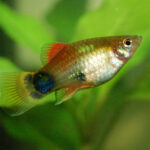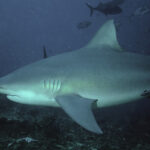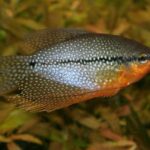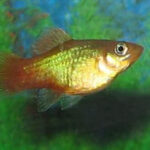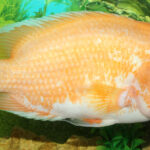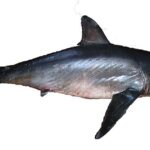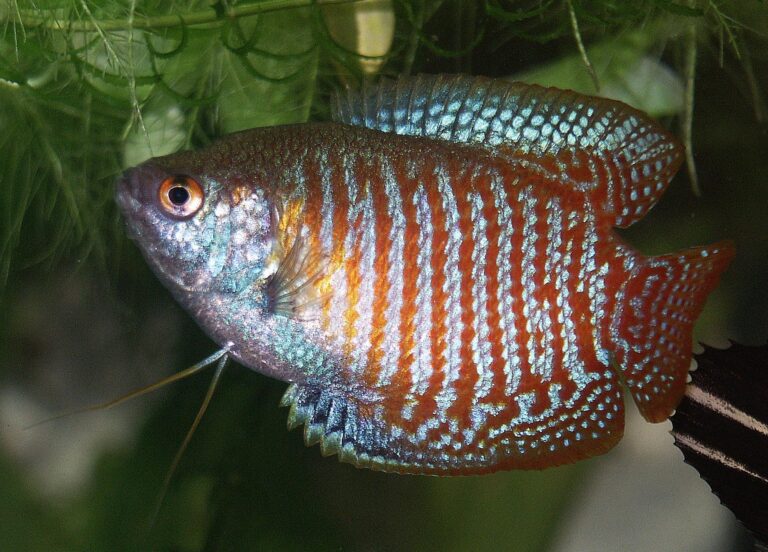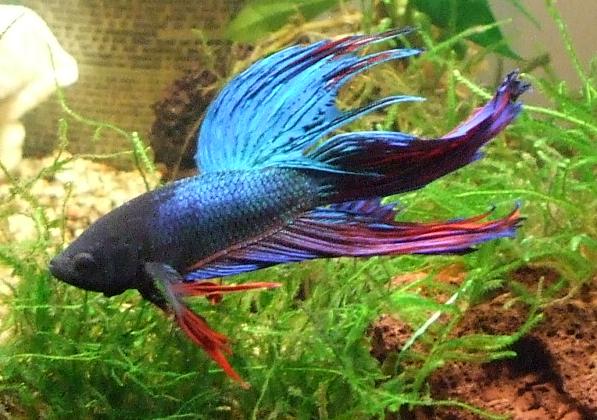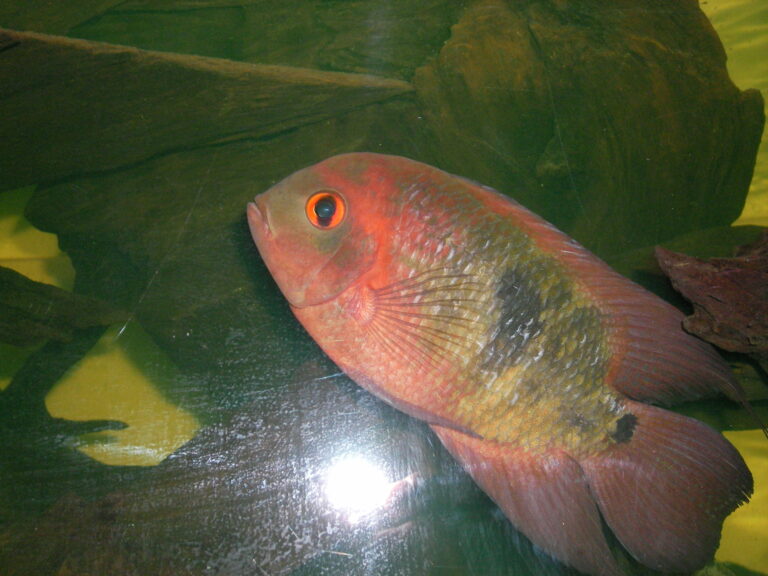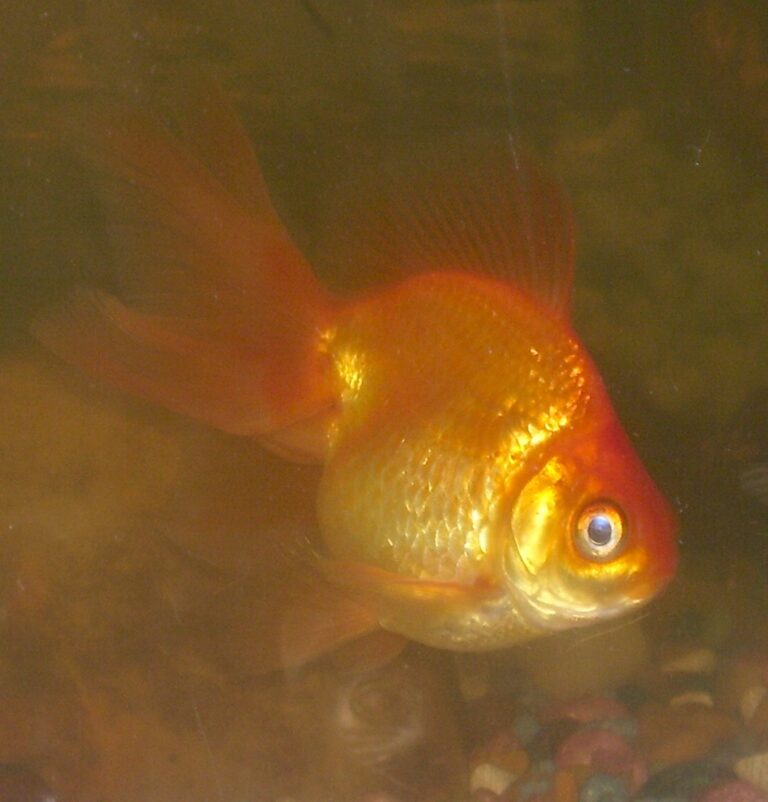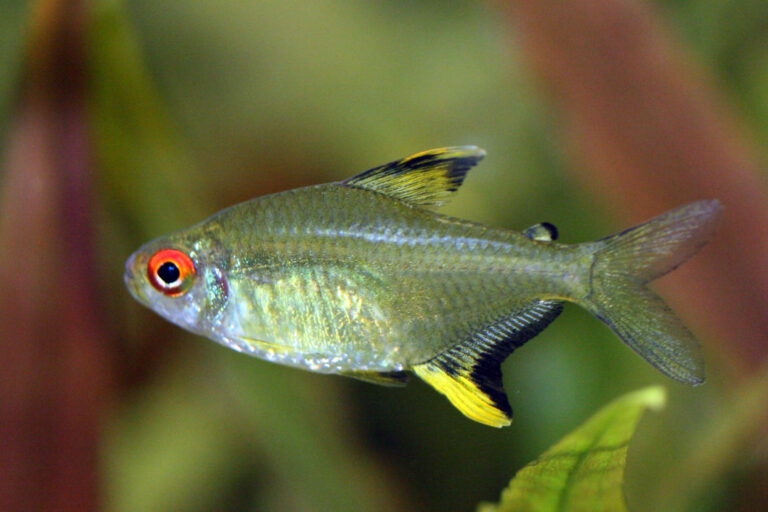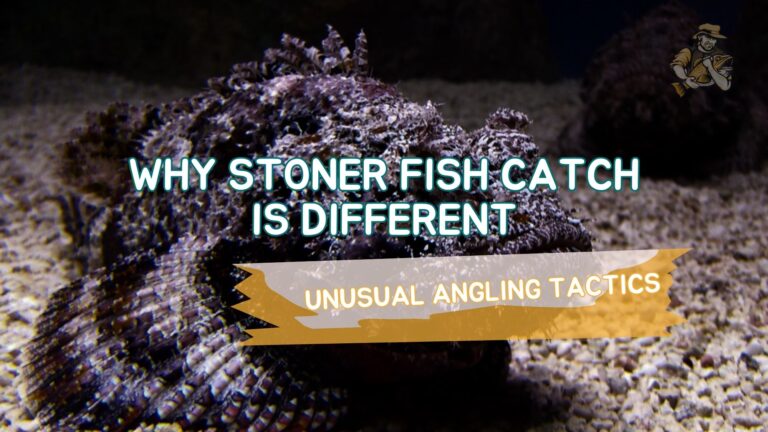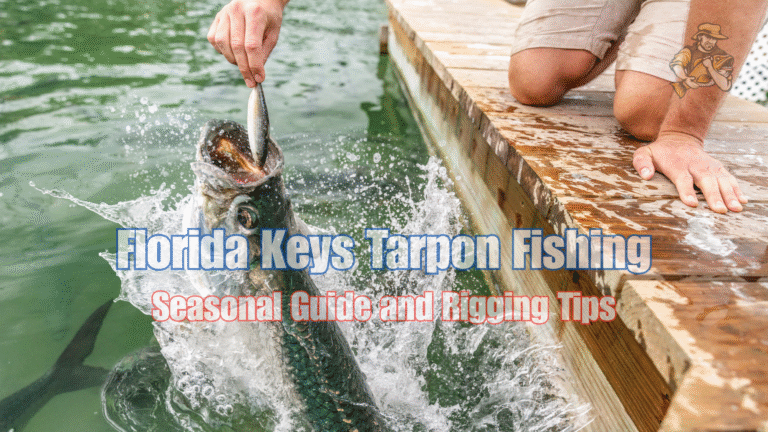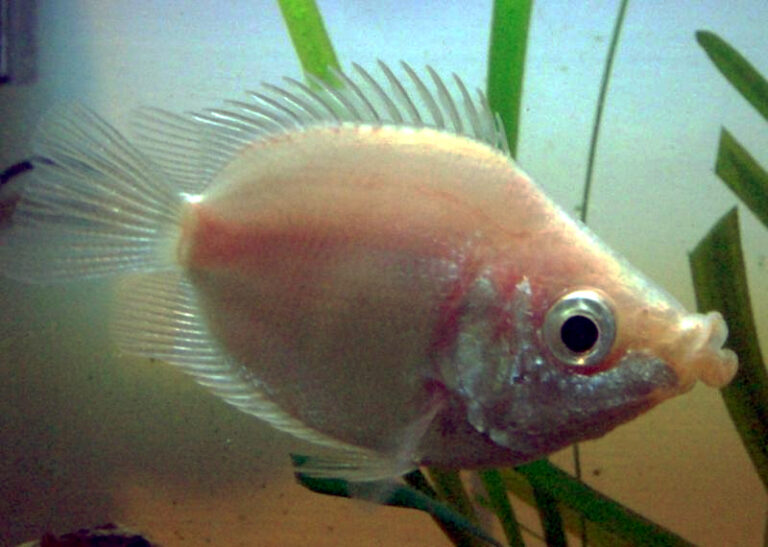Sailfin Molly
By Ryan Maron | Last Modified: June 12, 2025

The Sailfin Molly stands as one of the most distinctive freshwater fish species in both wild ecosystems and aquarium environments. Known scientifically as *Poecilia latipinna*, this remarkable livebearing fish captivates observers with its enlarged dorsal fin that resembles a ship’s sail when fully extended. Native to the southeastern United States and parts of Mexico, the Sailfin Molly plays a crucial ecological role as both predator and prey within aquatic food webs, while simultaneously serving as one of the most popular species in the global aquarium trade.
The species demonstrates exceptional adaptability to varying salinity levels, thriving in freshwater, brackish, and even saltwater environments. This euryhaline capability makes the Sailfin Molly an important indicator species for environmental health in coastal ecosystems. Their omnivorous feeding habits contribute to nutrient cycling within aquatic systems, while their prolific breeding behavior supports larger predatory fish populations throughout their native range.
| Feature | Details |
|---|---|
| Common Name | Sailfin Molly |
| Scientific Name | Poecilia latipinna |
| Family | Poeciliidae |
| Typical Size | Males: 10-15 cm (4-6 in), Females: 12-20 cm (5-8 in) |
| Habitat | Freshwater to brackish coastal waters |
| Diet | Omnivorous – algae, insects, small invertebrates |
| Distribution | Southeastern US, Mexico, introduced worldwide |
| Conservation Status | Least Concern |
Taxonomy & Classification
The Sailfin Molly belongs to the family Poeciliidae, commonly known as livebearers, within the order Cyprinodontiformes. First described by Charles Alexandre Lesueur in 1821, *Poecilia latipinna* derives its species name from the Latin “latipinna,” meaning “broad fin,” referring to the characteristic enlarged dorsal fin of mature males. The genus Poecilia encompasses approximately 40 species of New World freshwater fish, making it one of the most diverse groups within the Poeciliidae family.
Molecular phylogenetic studies have revealed that the Sailfin Molly shares close evolutionary relationships with other members of the *Poecilia sphenops* species complex. Recent genetic analysis suggests that *P. latipinna* diverged from its closest relatives approximately 2-3 million years ago during the Pliocene epoch. The species exhibits considerable genetic variation across its range, with distinct populations showing adaptation to specific environmental conditions.
Within the aquarium trade, numerous selectively bred varieties have been developed, including black, silver, marble, and balloon morphs. However, these ornamental varieties represent the same species and maintain the fundamental taxonomic classification as *Poecilia latipinna*. The International Commission on Zoological Nomenclature recognizes this binomial designation as the valid scientific name for all wild and domesticated populations of Sailfin Mollies.
Physical Description
The Sailfin Molly exhibits pronounced sexual dimorphism, with males and females displaying distinctly different physical characteristics. Adult males typically reach lengths of 10-15 centimeters, while females grow larger at 12-20 centimeters. The most striking feature of mature males is the dramatically enlarged dorsal fin, which can extend up to 4-5 centimeters in height when fully erect. This sail-like structure contains 14-16 fin rays and displays intricate patterns of spots, bands, or solid coloration depending on the individual’s genetic lineage.
Wild-type Sailfin Mollies exhibit a silvery-gray base coloration with darker mottling along the flanks and distinctive rows of spots arranged in horizontal lines. The caudal fin displays a rounded to slightly truncated shape, often featuring orange or yellow highlights along the edges. Males develop a modified anal fin called a gonopodium, which serves as a reproductive organ and typically measures 15-20% of the fish’s total body length.
Females possess a more subdued appearance with smaller dorsal fins and broader, deeper bodies adapted for carrying developing embryos. Their coloration tends toward olive-brown or gray-green tones with less pronounced patterning than males. Both sexes feature relatively large eyes positioned high on the head, facilitating surface feeding behavior and predator detection.
The species demonstrates remarkable phenotypic plasticity, with individuals capable of adjusting their coloration intensity based on environmental factors such as substrate type, water chemistry, and social dynamics. This adaptability contributes to their success across diverse habitats and explains the wide variety of color morphs observed in both wild and captive populations.
Habitat & Distribution
The Sailfin Molly occupies a diverse range of aquatic habitats throughout its native distribution, which extends from the southeastern United States through coastal regions of Mexico. Primary populations occur in freshwater and brackish environments from South Carolina to the Yucatan Peninsula, with the highest concentrations found in Florida, Louisiana, and Texas coastal plains. These fish inhabit slow-moving rivers, coastal marshes, lagoons, mangrove swamps, and tidal creeks where salinity levels fluctuate with tidal cycles.
Natural habitats typically feature shallow waters with dense aquatic vegetation, including submerged grasses, emergent cattails, and floating plants. Water temperatures in these environments range from 20-30°C (68-86°F), with seasonal variations influencing breeding cycles and activity patterns. The species demonstrates exceptional tolerance for salinity fluctuations, surviving in environments ranging from pure freshwater to full-strength seawater with specific gravity measurements up to 1.025.
Due to their adaptability and popularity in the aquarium trade, Sailfin Mollies have been introduced to numerous locations worldwide, including Hawaii, parts of Asia, Australia, and various Caribbean islands. In some regions, these introduced populations have established self-sustaining communities, though their ecological impact on native species remains a subject of ongoing research.
The species prefers areas with moderate water flow and abundant cover provided by aquatic vegetation or submerged structures. Optimal habitat conditions include slightly alkaline water with pH levels between 7.0-8.5 and moderate hardness levels. These environmental preferences reflect their evolutionary adaptation to coastal and estuarine ecosystems where mineral content and pH naturally trend toward alkaline conditions.
Diet & Feeding Behavior
The Sailfin Molly exhibits omnivorous feeding habits that contribute significantly to their ecological success across diverse environments. Their diet consists primarily of algae, detritus, small invertebrates, insect larvae, and organic matter suspended in the water column. This varied feeding strategy allows them to occupy multiple trophic levels within aquatic ecosystems and adapt to seasonal changes in food availability.
Feeding behavior patterns vary throughout the day, with peak activity occurring during early morning and late afternoon hours. Sailfin Mollies employ both surface skimming and benthic foraging techniques, using their upturned mouths to capture floating particles and their flexible lips to scrape algae from substrate surfaces. The species demonstrates particular efficiency at processing filamentous algae and cyanobacteria, making them valuable for maintaining ecosystem balance in their native habitats.
Juvenile Sailfin Mollies initially feed on microscopic organisms such as rotifers, copepod nauplii, and bacterial biofilms. As they mature, their diet expands to include larger prey items including mosquito larvae, small crustaceans, and aquatic worms. This ontogenetic dietary shift reflects changes in mouth size and digestive capacity as the fish develop.
The species exhibits opportunistic feeding behavior, readily consuming available food sources including plant matter, animal protein, and decomposing organic material. Their relatively long intestinal tract, typical of omnivorous fish species, enables efficient processing of both plant and animal matter. This digestive adaptation, combined with their ability to supplement their diet through filter feeding, contributes to their success in nutrient-poor environments where specialized feeders might struggle to survive.
Behavior & Adaptations
Sailfin Mollies display complex social behaviors that vary according to environmental conditions, population density, and reproductive status. Males establish temporary territories during breeding periods, defending areas around favored females or optimal spawning sites. These territorial displays involve extended dorsal fin positioning, lateral body presentations, and aggressive chasing behaviors directed toward competing males.
Schooling behavior occurs primarily among juveniles and non-breeding adults, with groups typically numbering 10-20 individuals in natural settings. These aggregations provide protection from predators and enhance foraging efficiency through cooperative feeding strategies. During periods of environmental stress or predator pressure, school sizes may increase significantly as individuals seek safety in numbers.
The species demonstrates remarkable physiological adaptations for surviving in variable salinity environments. Specialized chloride cells in their gill tissues actively regulate ion transport, allowing rapid adjustment to changing osmotic conditions. This euryhaline capability enables Sailfin Mollies to exploit ecological niches unavailable to stenohaline species and contributes to their success as colonizing organisms in disturbed habitats.
Sailfin Mollies exhibit sophisticated predator avoidance behaviors including rapid escape responses, cryptic coloration adjustments, and coordinated group movements. When threatened, individuals can quickly alter their body coloration to match surrounding vegetation or substrate patterns. This behavioral plasticity, combined with their ability to survive in marginal habitats avoided by many predators, enhances their survival prospects across diverse environmental conditions.
Temperature tolerance represents another significant adaptation, with the species capable of surviving brief exposure to temperatures as low as 14°C (57°F) and as high as 35°C (95°F). However, optimal physiological performance occurs within the 22-28°C (72-82°F) range where metabolic processes function most efficiently.
Reproduction & Life Cycle
The Sailfin Molly employs internal fertilization and live birth reproductive strategy characteristic of the Poeciliidae family. Sexual maturity occurs at approximately 3-4 months of age, corresponding to body lengths of 4-5 centimeters for males and 5-6 centimeters for females. Breeding cycles correlate strongly with environmental factors including water temperature, photoperiod, and food availability.
Courtship behavior involves elaborate displays by males featuring extended dorsal fin presentation, vibrant coloration intensification, and ritualized swimming patterns around receptive females. Males utilize their modified anal fin, the gonopodium, to transfer sperm packets directly into the female’s reproductive tract. Following successful mating, females can store viable sperm for extended periods, enabling multiple broods from a single fertilization event.
Gestation periods typically range from 28-35 days, varying according to water temperature and female body condition. Brood sizes correlate with female size and age, with young females producing 10-20 offspring while mature females may release 40-80 fry per reproductive cycle. The species exhibits remarkable reproductive potential, with healthy females capable of producing new broods every 4-6 weeks under optimal conditions.
Newly born fry measure approximately 6-8 millimeters in length and possess fully functional swimming and feeding capabilities immediately upon release. Parental care is minimal, with adults showing no recognition of their offspring and occasionally consuming fry when other food sources are scarce. This reproductive strategy emphasizes quantity over quality, maximizing the probability that some offspring will survive to reproductive maturity despite high juvenile mortality rates.
Environmental factors significantly influence reproductive success, with optimal breeding occurring in water temperatures between 24-28°C (75-82°F) and stable salinity conditions. Seasonal breeding patterns in natural populations peak during warmer months when food resources are most abundant and environmental conditions favor fry survival.
Predators & Threats
Sailfin Mollies serve as important prey species within aquatic food webs, supporting populations of larger predatory fish, birds, and aquatic invertebrates. Primary predators include largemouth bass, gar, snook, tarpon, and various cichlid species that share their native habitats. Wading birds such as herons, egrets, and ibises frequently target Sailfin Mollies in shallow water environments, while diving birds including cormorants and grebes prey upon them in deeper areas.
Juvenile Sailfin Mollies face additional predation pressure from smaller predators including dragonfly nymphs, aquatic beetles, and other invertebrate predators. This intense predation during early life stages necessitates the species’ high reproductive output and rapid maturation strategy. Adult Sailfin Mollies employ various anti-predator adaptations including schooling behavior, rapid escape responses, and utilization of dense vegetation cover.
Habitat degradation represents the most significant long-term threat to wild Sailfin Molly populations. Coastal development, agricultural runoff, and water diversions have altered or eliminated critical breeding and nursery habitats throughout portions of their range. Pollution from agricultural pesticides, urban runoff, and industrial discharge affects water quality and food resource availability in many coastal areas.
Climate change impacts including sea level rise, increased storm intensity, and altered precipitation patterns threaten the delicate balance of coastal ecosystems where Sailfin Mollies thrive. Changes in salinity regimes, temperature extremes, and habitat connectivity may force population shifts and reduce suitable habitat availability.
The species faces minimal direct exploitation pressure from commercial or recreational fisheries due to their small size and limited economic value. However, collection for the aquarium trade may impact some localized populations, particularly those with unique color variations or in easily accessible locations. Most aquarium specimens derive from captive breeding operations rather than wild collection, reducing this potential threat.
Conservation Status
The International Union for Conservation of Nature (IUCN) classifies the Sailfin Molly as Least Concern, reflecting the species’ stable population status and wide distribution throughout its native range. This designation acknowledges the species’ adaptability, high reproductive potential, and successful establishment in numerous introduced locations worldwide. Current population trends appear stable across most of their natural habitat, with some local variations due to environmental changes and habitat modifications.
Regional conservation assessments recognize that while the species overall faces no immediate extinction risk, certain populations may experience localized pressures from habitat loss and environmental degradation. Coastal development in Florida, Texas, and Louisiana has eliminated some historical breeding areas, though the species’ mobility and adaptability have enabled colonization of alternative habitats.
Monitoring programs conducted by state wildlife agencies track Sailfin Molly populations as part of broader coastal ecosystem assessments. These surveys provide valuable data on population dynamics, habitat preferences, and ecosystem health indicators. The species serves as a useful bioindicator for coastal wetland conditions due to their sensitivity to water quality changes and habitat alterations.
Conservation efforts focus primarily on habitat protection and restoration rather than species-specific interventions. Coastal wetland preservation, water quality improvement programs, and restoration of natural hydrological patterns benefit Sailfin Mollies along with numerous other native species. Regulatory frameworks governing coastal development and water management consider the needs of entire ecosystem communities rather than individual species.
The species’ success in captivity and established populations outside their native range demonstrate their resilience and adaptability. However, introduced populations require monitoring to assess potential impacts on native ecosystems and ensure they do not become problematic invasive species in sensitive environments.
Human Interaction
The Sailfin Molly maintains one of the strongest human-fish relationships among freshwater species, primarily through the global aquarium trade where they rank among the most popular livebearing fish. Commercial breeding operations produce millions of specimens annually for distribution to pet stores worldwide, generating significant economic activity within the aquaculture industry. Their hardy nature, attractive appearance, and ease of breeding make them ideal candidates for beginning aquarists and educational programs.
Selective breeding programs have produced numerous ornamental varieties including black mollies, silver mollies, marble patterns, and the distinctive balloon molly morph with altered body proportions. These breeding efforts demonstrate human influence on the species’ phenotypic diversity, creating forms that would not occur in natural populations. The aquarium trade’s preference for unusual color patterns and fin shapes has driven continued genetic selection for increasingly exotic variants.
Scientific research utilizes Sailfin Mollies as model organisms for studies investigating salinity tolerance, reproductive biology, and behavioral ecology. Their adaptability to laboratory conditions and rapid reproduction cycles make them valuable subjects for controlled experiments. Research findings contribute to broader understanding of fish physiology, evolution, and adaptation strategies in variable environments.
Educational institutions frequently employ Sailfin Mollies in biology classrooms and public aquarium displays to demonstrate concepts including adaptation, reproduction, and ecosystem relationships. Their peaceful temperament and interesting behaviors make them excellent ambassadors for aquatic conservation awareness programs. Many people develop their first appreciation for aquatic ecosystems through interactions with these charismatic fish.
The species occasionally appears in recreational fishing contexts, though their small size limits their appeal to most anglers. Some specialized micro-fishing enthusiasts target Sailfin Mollies using ultralight tackle, appreciating the challenge of catching these quick, small fish. Similar peaceful behavior patterns are exhibited by other popular aquarium species including guppy varieties and platy fish, making them excellent community tank companions.
Predators & Threats
Adult Sailfin Mollies face predation from various aquatic and terrestrial predators throughout their range. Large predatory fish including snook, tarpon, gar, and bass actively hunt mollies in open water areas, while smaller predators such as sunfish and cichlid species target juveniles and smaller adults. Wading birds represent significant aerial predators, with great blue herons, snowy egrets, and various ibis species frequently observed feeding in molly habitat areas.
Aquatic invertebrates pose particular threats to juvenile life stages, with dragonfly nymphs, giant water bugs, and predaceous diving beetles capable of capturing and consuming small mollies. These invertebrate predators often concentrate in the shallow, vegetated areas preferred by young Sailfin Mollies for feeding and shelter. The high predation pressure during early life stages drives the species’ reproductive strategy emphasizing large brood sizes and frequent breeding cycles.
Environmental threats increasingly impact Sailfin Molly populations across their native range. Agricultural runoff containing fertilizers and pesticides degrades water quality and reduces prey availability in many coastal systems. Urban development eliminates critical wetland habitats while introducing pollutants including heavy metals, petroleum products, and pharmaceutical compounds that accumulate in aquatic food chains.
Climate change presents emerging challenges through altered precipitation patterns, increased storm intensity, and rising sea levels. These environmental shifts modify salinity gradients, temperature regimes, and habitat connectivity in coastal areas where Sailfin Mollies concentrate. Extended drought periods reduce freshwater input to estuarine systems, while intense storms can dramatically alter habitat structure and water chemistry.
Invasive species introductions create additional competitive pressures in some regions. Non-native plants can alter habitat structure and reduce native vegetation that provides food and shelter resources. Introduced fish species may compete for similar ecological niches or prey directly upon Sailfin Mollies, potentially disrupting established population dynamics.
Interesting Facts
The Sailfin Molly possesses remarkable salinity tolerance that exceeds most freshwater fish species, capable of thriving in environments ranging from pure freshwater to full-strength seawater. This euryhaline adaptation allows them to inhabit tidal pools, salt marshes, and brackish lagoons where few other freshwater species can survive. Marine biologists have documented individuals transitioning between freshwater and saltwater environments within hours, demonstrating extraordinary physiological flexibility.
Male Sailfin Mollies can store and display their enlarged dorsal fins like a peacock’s tail, using this impressive structure for both courtship displays and territorial assertions. The fin contains specialized muscle groups that allow precise control over its position and movement patterns. Dominant males often maintain their dorsal fins in elevated positions for extended periods, signaling their status to both potential mates and competitors.
The species exhibits temperature-dependent sex determination in some populations, where environmental temperatures during early development influence the ratio of males to females produced. Higher temperatures tend to favor male development, while cooler conditions promote female differentiation. This mechanism may help populations adapt to changing environmental conditions over multiple generations.
Sailfin Mollies demonstrate remarkable learning abilities for fish of their size, capable of recognizing individual humans, learning feeding schedules, and even responding to simple training exercises. Aquarium specimens often develop preferences for specific feeding locations and times, displaying anticipatory behaviors when their caretakers approach. This intelligence contributes to their popularity as interactive aquarium species.
The species serves as a living laboratory for studying hybrid vigor and genetic diversity. Wild populations contain extensive genetic variation that has enabled rapid adaptation to diverse environments. Captive breeding programs continue to reveal new genetic combinations, producing color patterns and fin shapes not observed in natural populations. These breeding achievements demonstrate the species’ remarkable genetic plasticity and potential for continued diversification.
Research has revealed that Sailfin Mollies possess sophisticated chemical communication systems, using pheromones to convey information about reproductive status, territorial boundaries, and alarm signals. Females can detect male quality through chemical cues, while males use scent trails to locate receptive partners. This chemical communication network operates alongside visual and behavioral cues to coordinate complex social interactions.
Frequently Asked Questions
How long do Sailfin Mollies live in the wild versus captivity?
Wild Sailfin Mollies typically live 2-3 years due to predation pressure and environmental challenges, while captive specimens can reach 4-5 years with proper care. The controlled environment of aquariums eliminates predation threats and provides consistent food sources, extending their natural lifespan. Optimal water conditions, balanced nutrition, and disease prevention contribute to longevity in captive populations.
Can Sailfin Mollies survive in full saltwater environments?
Yes, Sailfin Mollies can adapt to and thrive in full-strength saltwater with proper acclimation. Their specialized gill structure and kidney function enable regulation of salt concentrations in their bloodstream. However, gradual transition over several days or weeks produces better survival rates than sudden transfers between freshwater and saltwater environments.
What is the difference between male and female Sailfin Mollies?
Males display dramatically larger dorsal fins, smaller body sizes, and modified anal fins called gonopodia used for reproduction. Females grow larger overall, possess standard anal fins, and develop broader bodies for carrying developing embryos. Coloration patterns also differ, with males typically showing more vibrant hues and distinct markings compared to females.
How many babies do Sailfin Mollies produce per brood?
Brood sizes vary according to female age and size, ranging from 10-20 offspring for young females to 40-80 fry for mature specimens. Large, well-conditioned females may occasionally produce broods exceeding 100 individuals. Females can produce new broods every 4-6 weeks under optimal conditions, demonstrating their remarkable reproductive potential.
Conclusion
The Sailfin Molly represents a remarkable example of adaptive success in aquatic ecosystems, demonstrating exceptional resilience across diverse environmental conditions while maintaining crucial ecological functions as both predator and prey species. Their unique physiological adaptations, complex behavioral patterns, and significant role in both natural ecosystems and human culture establish them as one of the most important freshwater fish species in contemporary aquatic biology. Continued research and conservation efforts will ensure that future generations can appreciate these extraordinary fish in both wild and captive settings.
Share The Article:
More Fish Species:
-
Gouramis
Gouramis represent one of the most fascinating and diverse groups of freshwater fish, belonging to the family Osphronemidae within…
-
Crown Tail Betta
The Crown Tail Betta stands as one of aquaculture’s most distinctive ornamental fish, renowned for its dramatically elongated, spiky…
-
Chocolate Cichlid
The Chocolate Cichlid stands as one of South America’s most distinctive freshwater species, captivating aquarists and researchers alike with…
-
Green Swordtail
The Green Swordtail (Xiphophorus hellerii) represents one of the most recognizable and ecologically significant freshwater fish species in both…
-
Fantail Goldfish
The Fantail Goldfish represents one of the most recognizable and beloved fancy goldfish varieties in the aquarium trade worldwide….
-
Lemon Tetra
The Lemon Tetra (*Hyphessobrycon pulchripinnis*) stands as one of South America’s most vibrant freshwater fish species, distinguished by its…
Discover
-
Why Stoner Fish Catch is Different: Unusual Angling Tactics
Let’s face it – some fish just act plain weird. Whether you’re an experienced angler or just starting out,…
-
Croaker Fishing Secrets: Why Most Anglers Miss the Big Ones
Croaker fishing might seem straightforward, but there’s more to catching these tasty fighters than most weekend anglers realize. I’ve…
-
7 Shark Fishing Tactics That Actually Work (Expert Guide)
Shark fishing remains one of those bucket-list experiences that separates casual anglers from the truly adventure-hungry. But here’s the…
-
Surfcasting Techniques: Master Beach Fishing and Catch More Fish
There’s something almost magical about standing at the edge of an ocean, rod in hand, as waves crash around…
-
Michigan Fishing License 2025: Complete Cost & Requirements Guide
Ask any angler about the most frustrating part of fishing, and paperwork will likely rank right up there with…
-
Florida Keys Tarpon Fishing: Seasonal Guide and Rigging Tips
I still remember my first tarpon hookup in the Florida Keys like it happened yesterday, not 17 years ago….
Discover
-
Shore Fishing for Beginners: 5 Odd Techniques That Actually Work
I’ve spent more mornings than I can count standing on the shores of Michigan lakes watching boats drift by,…
-
Kissing Gourami
The Kissing Gourami (*Helostoma temminckii*) stands as one of the most distinctive and recognizable freshwater fish species in both…
-
How to Use a Spinnerbait: Complete Guide for Beginners
In my three decades of fishing experience, I’ve found few lures as versatile and effective as the humble spinnerbait….
-
Kayaking Fishing: Ultimate Guide for Water Adventurers
There’s something magical about gliding across the water in a kayak with a fishing rod in hand. The stealthy…
-
Best Fishing Spots in California: Lakes, Rivers, and Coastal Hotspots
California fishing has always struck me as a study in beautiful contradictions. From snow-fed alpine lakes to sweltering desert…
-
Kayak Fishing vs Boat Fishing: Which Truly Offers the Best Experience?
There’s nothing quite like the debate that erupts when you ask a group of anglers whether kayak fishing or…




